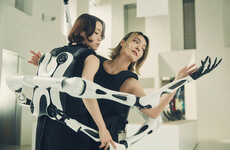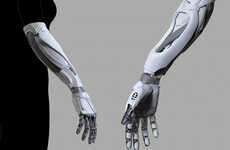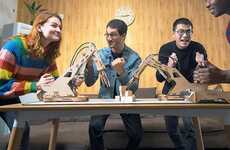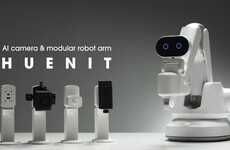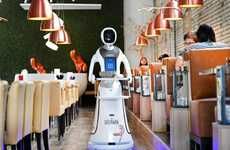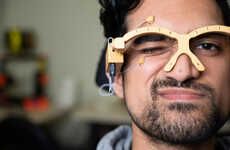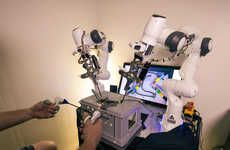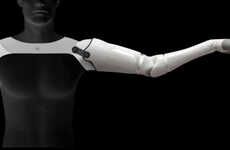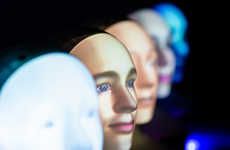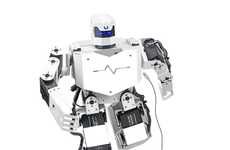
The 'Arm-A-Dine' is Being Used to Investigate Social Eating
Justin Lam — November 24, 2018 — Tech
References: theverge & boingboing.net
Developed by researchers from Australia's RMIT University, the 'Arm-A-Dine' is a unique robotic third arm worn in the middle of the chest. While most robotic arms are developed to help better perform tasks, the 'Arm-A-Din' turns into a game of sorts as wearers are tasked with using the robotic arm to feed partners standing across from them. This may sound fairly simple but the arm isn't operated with a controller and instead functions based off a person's facial expressions.
The ultimate goal of the 'Arm-A-Dine' isn't to completely change the way we eat but instead to study the social experience of eating. This research would then go to help better understand the loneliness epidemic and may be used to combat this issue with robotics as a catalyst.
Image Credit: RMIT University
The ultimate goal of the 'Arm-A-Dine' isn't to completely change the way we eat but instead to study the social experience of eating. This research would then go to help better understand the loneliness epidemic and may be used to combat this issue with robotics as a catalyst.
Image Credit: RMIT University
Trend Themes
1. Facial Tracking Robotics - Disruptive innovation opportunity lies in developing facial tracking technology for various applications beyond social eating.
2. Social Robotics - The 'Arm-A-Dine' highlights the potential of using robotics to improve social interactions and combat loneliness.
3. Human-machine Interaction - Exploring new ways of controlling robots through facial expressions presents opportunities for enhancing collaboration and user experience.
Industry Implications
1. Hospitality - The 'Arm-A-Dine' could be applied in the hospitality industry to enhance dining experiences and create a unique social atmosphere.
2. Mental Health - The research behind the 'Arm-A-Dine' has implications for the mental health industry, as robotics can help address issues of isolation and loneliness.
3. Entertainment - Using facial tracking robotics could create immersive and interactive experiences in the entertainment industry, transforming how we engage with games and virtual reality.
1.3
Score
Popularity
Activity
Freshness


